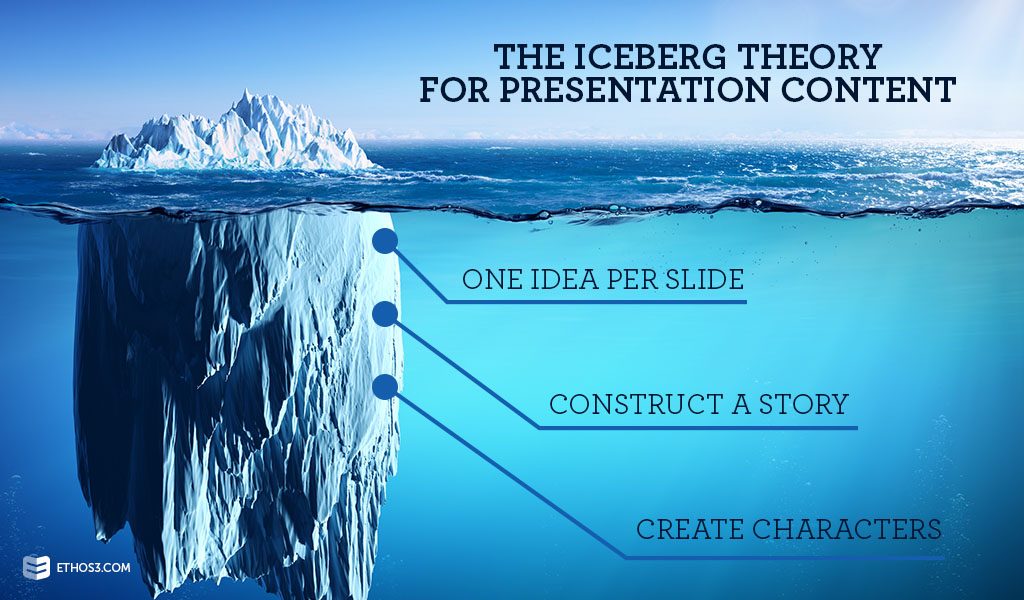It’s no secret that our attention spans are shrinking. From 140 characters in a tweet to a 10 second video on SnapChat, content is being shared in a compact and brief way. This means the message must come through right away. Get to the point fast if you want your message to be heard. The same is said for presentations. Using the Iceberg Theory for presentation content can help you get your message across to every audience.
The Iceberg Theory for Presentation Content
The Iceberg Theory is a style of writing created by author Ernest Hemingway. He believed that eliminating details that writer and reader inherently know, the story will strengthen. “Only 10-20% of the story is directly revealed through prose. In comparison to an actual iceberg, that is usually the portion of the floating ice mountain that is visible above water. The other 80-90% of the story lies behind the scenes and is integrated in the structure of the story.”
Skyword Content Standard has a guide for how to use this style for brand storytelling. This article inspired me to give presenters some pointers for using the Iceberg Theory in developing presentation content.

Stick to One Idea Per Slide
One mistake presenters make is cramming too much information on one slide. Showing more than one chart on a slide will not work to convey your message. Having a long bullet point list will be too much for the audience to read. Instead, break out the content onto individual slides. This will ensure that the point you want to make will be heard.
Construct a Story Around the Content
Your slides should build on top of each other. Frame the main takeaways around an experience. This creates an emotional investment into the content. You can tell a story at the beginning of the presentation and circle back to it at the end. Or you can weave in parts of your story throughout your presentation. Keep it simple and directly tied to your message.
Use Characters to Represent the Audience
Create a character or a series of characters to explain processes within your presentation. This works great for training presentations. Write a character that goes through the training process along with the audience. This will keep the messaging brief and simple. The audience will be able to relate to the character and quickly learn the new process.
All these methods are just revealing the surface of your messaging. The depth of the message will be revealed with the call to action that puts your ideas into motion. For more presentation tips and tricks, look at these posts on the Ethos3 Blog:
The Complete Guide to Editing Presentation Content